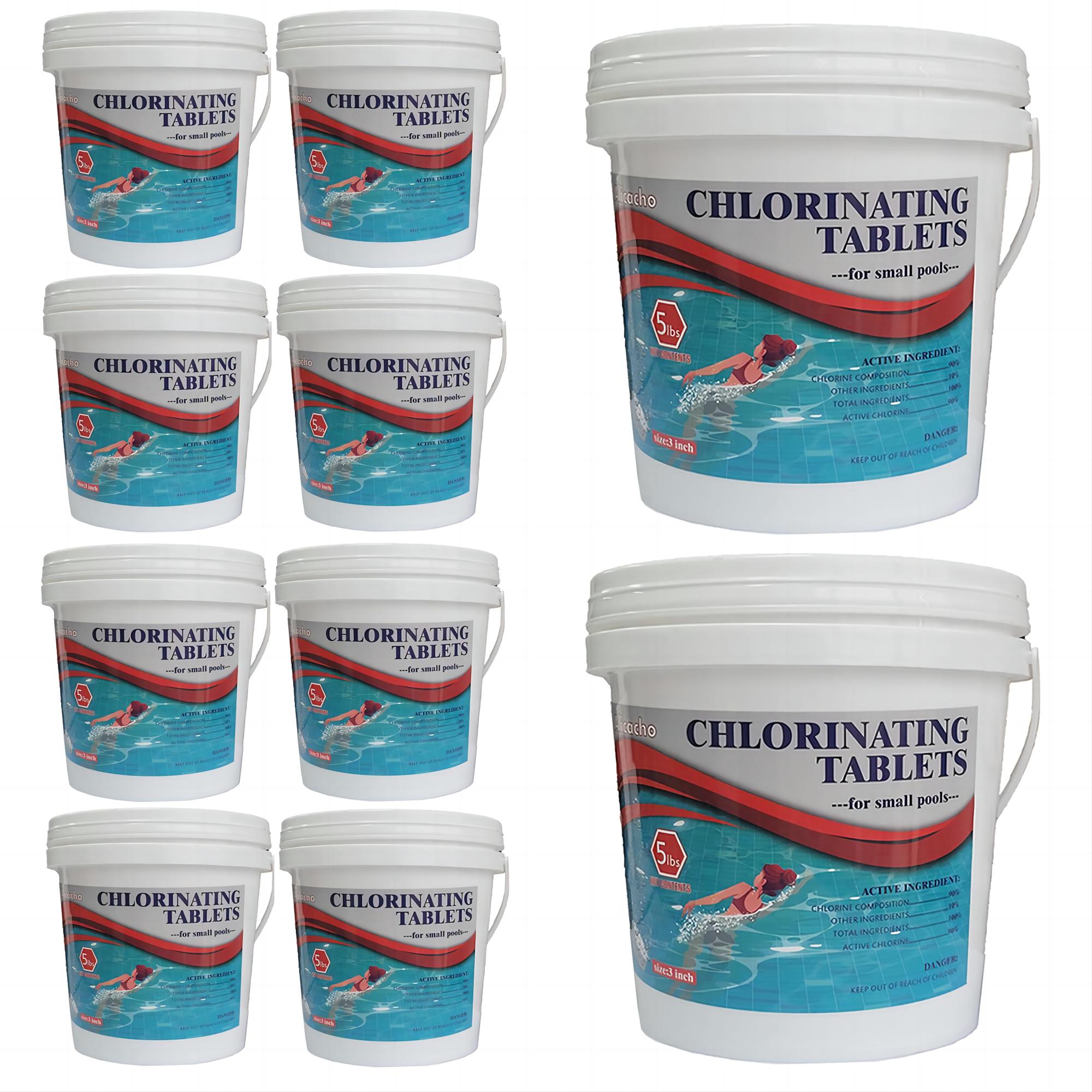When a chlorine low level is detected, a pool owner must immediately take action to raise it. Once the level of free chlorine is below 1 ppm, this means that pool water is not sanitized, and there is a high chance that algae will build up, and bacteria in pool waters will also be detected. So, what must you do to raise it to the required level and what can be the reasons to free chlorine low level?
In this article, we are going to figure out effective methodologies to raise free chlorine levels by also discussing possible causes of why it happened. There are a few simple tricks any pool owner can try to do to raise free chlorine low levels, let us figure out each of them as we go along this post.
Part 1. What Is Low-Free Chlorine?
Before we get to understand free chlorine low levels, the definition of free chlorine must be understood first. If you are a first-time pool owner, you might not have enough idea on what free chlorine is, you only text chlorine levels as a whole. Test kits usually test for total chlorine level only, and that is why you have to check for free chlorine level. Free chlorine is the available one in your pool water that can still act as a sanitizer.
It is needed to test free chlorine since it can act as an effective sanitizer and can function 25 times better than used-up combined chlorine. On the other hand, combined chlorine is the type of chlorine that has already been used or combined with different contaminants, and this is why it is no longer effective to use as a sanitizer.
Aside from free chlorine and combined chlorine, there is also total chlorine, which is the amount of free and combined chlorine added together. To calculate free chlorine, you just have to subtract combined chlorine from total chlorine. For free chlorine to stay as an effective sanitizer, its level must stay higher than the level of combined chlorine.
When your pool has free chlorine level detection for a long period, you can expect microorganisms and bacteria to form thus creating a very hazardous environment for your pool patronizers. Once there are also low levels of free chlorine, your pool water may be hazy or cloudy in appearance.

Part 2. Why is My Free Chlorine Low?
So, what are the possible reasons for free chlorine low level detection? There can be lots of causes as to why it occurs, and to easily formulate possible ways to raise its level, detection of the causes would help a lot. Let us get to these reasons one by one, below.
1. Presence of Sunlight and Cyanuric Acid Is Too Low
The period that chlorine levels may deplete faster may depend on the type you use. If you are fond of using not-stabilized chlorine like bleach or the liquid form of chlorine to sanitize your pool water, the chlorine level may quickly drop in the sunlight. The rays of the sun may break down chlorine especially if it does not have any types of When stabilizers like cyanuric acid, it can also happen once the CYA level is too low.
2. When the Pool is Refilled With Fresh Water
If you drained your pool, and you have just added fresh water to it, water chemistry can be easily disrupted. This is because fresh water is less sanitized, and pool chemicals must still be added to balanced water chemistry.
3. The Salt In The Salt Water Pool is Not Enough
If you are using a saltwater generator, and you have free chlorine low level detection, it can be because the pool may not have enough salt. For your salt cell to function, a specific level of salinity is required.
4. Heavy Usage of Pool
If you are a pool owner, especially if your pools are commercial ones, a heavy bather load is not impossible. And once there is heavy pool usage, more contaminants are introduced to your pool water. And once there are lots of contaminants and bacteria that need to be battled with, free chlorine may be used up.
5. CYA Level is too High
The cyanuric acid level is vital when it comes to free chlorine low level detection. It must be maintained at the needed level. Once it is too high, chlorine effectiveness can be hampered, and it may also weaken the ability of chlorine to sanitize the pool water.
6. There is an increase in Organic Contaminants
When there is heavy rain, and your pool is uncovered, it is prone to organic contaminants. Once organic contaminants build up, free chlorine might be used up and may result in low levels afterward.
7. Chlorine Added Is Not Enough
If you do not know the appropriate chlorine level needed for your pool to remain a safe and healthy haven for people to swim in, free chlorine low level detection might always be encountered. Always make sure to check the labels of the chlorine type that you add to your water and consider the right level of chlorine that must be maintained. To provide accurate details, you can always use test kits to test the remaining free chlorine in your pool.
Part 3. How do I Raise the Free Chlorine in My Pool?
To raise the chlorine levels in your pool, you can do lots of things! The ideal level of chlorine in your pool must be in between the ranges of 1 and 4 ppm. The ideal perfect level of chlorine is 3 ppm. Let us see some of the actions to execute to help you reach the ideal level of chlorine for your pools.

1.Use Dichlor Granules
If you have indoor pools, jacuzzis, hot tubs, and spas you can use dichlor granules. This can easily dissolve in your pool, thus allowing you to quickly increase the level of chlorine as well. It can’t also affect the overall alkalinity in your pool and has a very minimal effect on your pH level.
2. Shock your Pools
Another remedy that you can execute is to shock your pools. You can use chlorine-based shocks and non-chlorine-based shocks if you want. If you use the chlorine-based ones, it can rapidly increase the level of chlorine in your pools, on the other hand, non-chlorine-based ones will be able to reduce the amount of combined chlorine. So, if you have to raise the chlorine level by at least 10 ppm or more, it is advisable to use chlorine-based shocks
3. Use Trichlor
One of the common products used by pool owners to increase the level of chlorine in pools is cyanuric acid or Trichlor. This is mostly used by pool owners who have outdoor pools. It can be slowly dissolved in the pool water, and this is why it can be great to use with a chlorinator. It also comes in many forms like pucks, granules, pellets, and even sticks. It is also one of the most common choices since it is not so expensive. On the other hand, trichlor is too concentrated, which can cause skin burns considering small amounts of exposure. You should also avoid inhaling it to avoid other possible health issues, when you opt to use it, you are encouraged to use protective facemasks. It also has low alkalinity levels which can cause the surfaces and equipment of your pools to easily corrode
Part 4. FAQs
1. What is More Important Free Chlorine or Total Chlorine?
When it comes to the chlorine contents of your pools, it is more important to identify the level of free chlorine than the total one. It should also be higher to make sure that pool water is still being sanitized.
2. Does Non Chlorine Shock Free Up Chlorine?
If you want a good option to get rid of organic debris and water that’s already murky, the use of non-chlorine shock can be reliable. You can also use it to effectively reduce the level of combined chlorine. For algae blooms or excess bacteria from swimmers, use chlorinated shock for optimal results.
3. What Should Free Chlorine Be After Shocking?
The available level of free chlorine must reach the span between 2 and 4 ppm. It is a must to follow all the indicated measurements, and instructions on the label of the pool shock product to avoid any accidents which can lead to possible hospitalization. Remember that you cannot dip into the water right away after shocking your pool.





